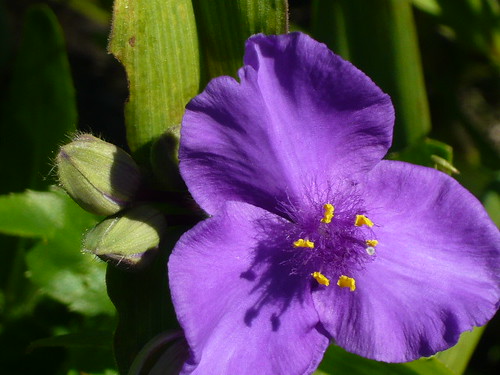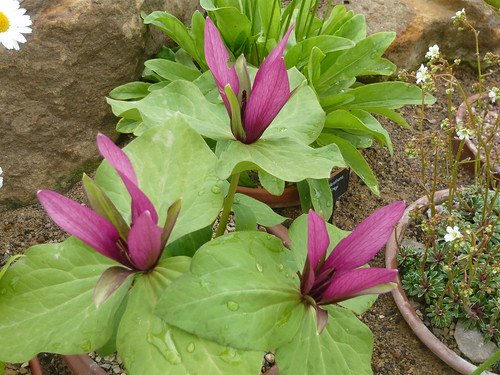Growing Trillium Spring Flowering Perennials
Trillium are idea plants for woodland gardens or a shady border. The three petals produce an interesting triangular pattern often enhanced by the three sepals that cover the bloom and open to allow the flower to shine through.
What are Trilliums and how to Care for Them
- Trilliums are a species of rhizomatous, herbaceous perennials.
- The large green leaves are often mottled with maroon markings.
- Trilliums thrive in deep, moist, slightly acidic soil and originate from North America and Asia.
- Trillium should be planted when they have plump rhizomes and fresh roots that haven’t been allowed to dry out.
- They respond well to good feeding with organic matter.
- Trillium are also known as Wake Robin, Birthroot and Toad shade.
Best of 60 Varieties
- Trillium luteum (agm) has long lasting lemon scented, narrow yellow flowers. Flowers sit above ovate, patterned green leaves and plants grow about 12″ high. The flowers are long lasting with a lemon scent.
- Trillium errectum (agm) is generally dark red or purple as above and forms a large clump over time. Do not pick the flowers as the plant needs all the energy it can muster to grow for next season. This variety is one of the more vigorous at 18-20″ high and flowers in early spring with resistance to some frost.
- Trillium Grandiflorum (agm) has large cup shaped white flowers with green sepals and wavy petals. The flowers can light up a shady spot and contrast well with the dark green foliage.
Advice from RHS on Trilliums
‘Although trilliums are moisture lovers, they will not tolerate waterlogging.
They will not thrive on heavy, wet clay soils. Planting in raised beds is a solution. Another is to dig out the clay to a spades depth and fill with a mixture of loam, garden compost, well rotted manure and composted bark bulked up with sharp sand. Mound the material so it is at least 10cm (4in) above the surrounding soil level. This allows plants to root deeply but avoids them sitting in waterlogged conditions over winter.
Trilliums should be planted about 7-10cm (2 1/2 – 4in) deep. The best time for planting is late summer as it gives the rhizomes time to establish good root systems before the following growing season.
Keep well watered during dry weather in spring and early summer. Apply an annual mulch of well decayed organic matter in early spring. A light application of a balanced fertiliser in late winter is also beneficial.
Trilliums do not really thrive in containers as they prefer a moist, rich garden soil. But you can try them in pots of sandy loam, such as John Innes No 3 with added gritty sand.’ (see below)


